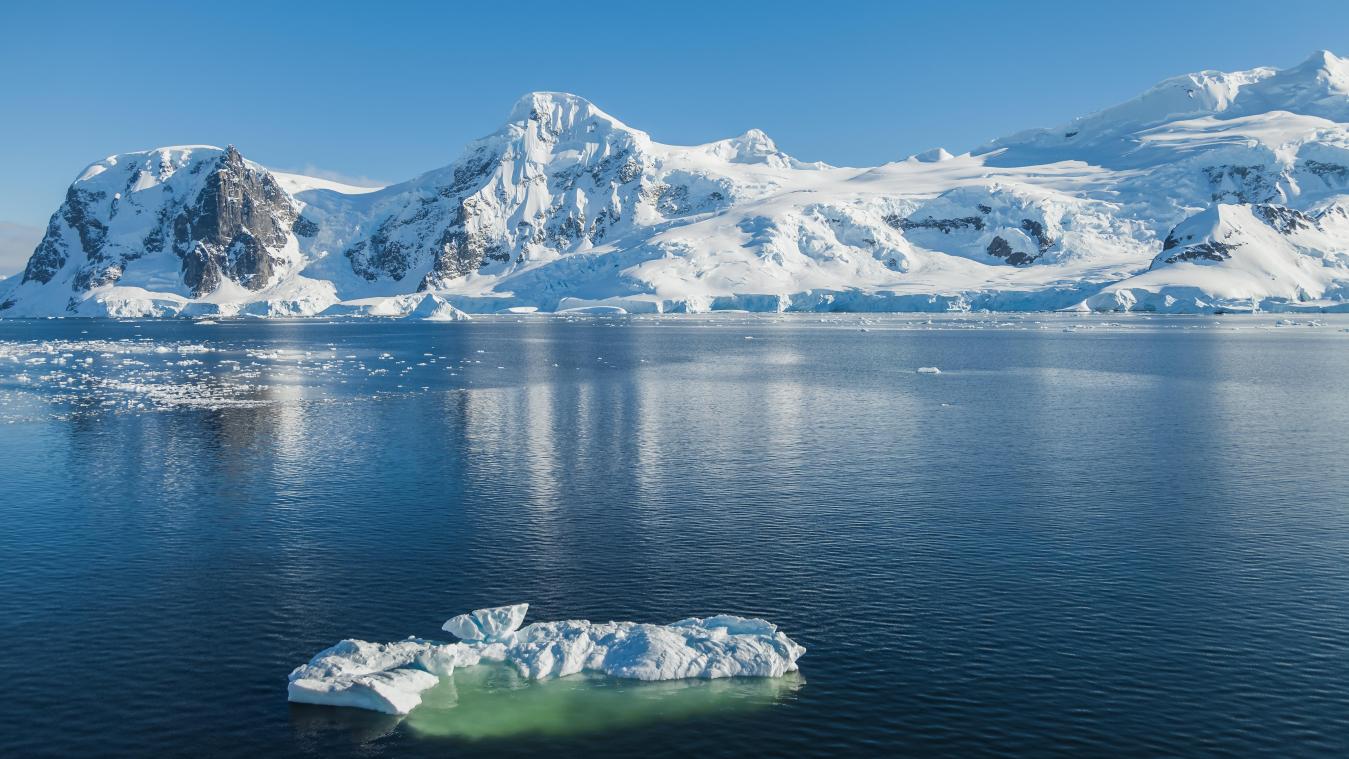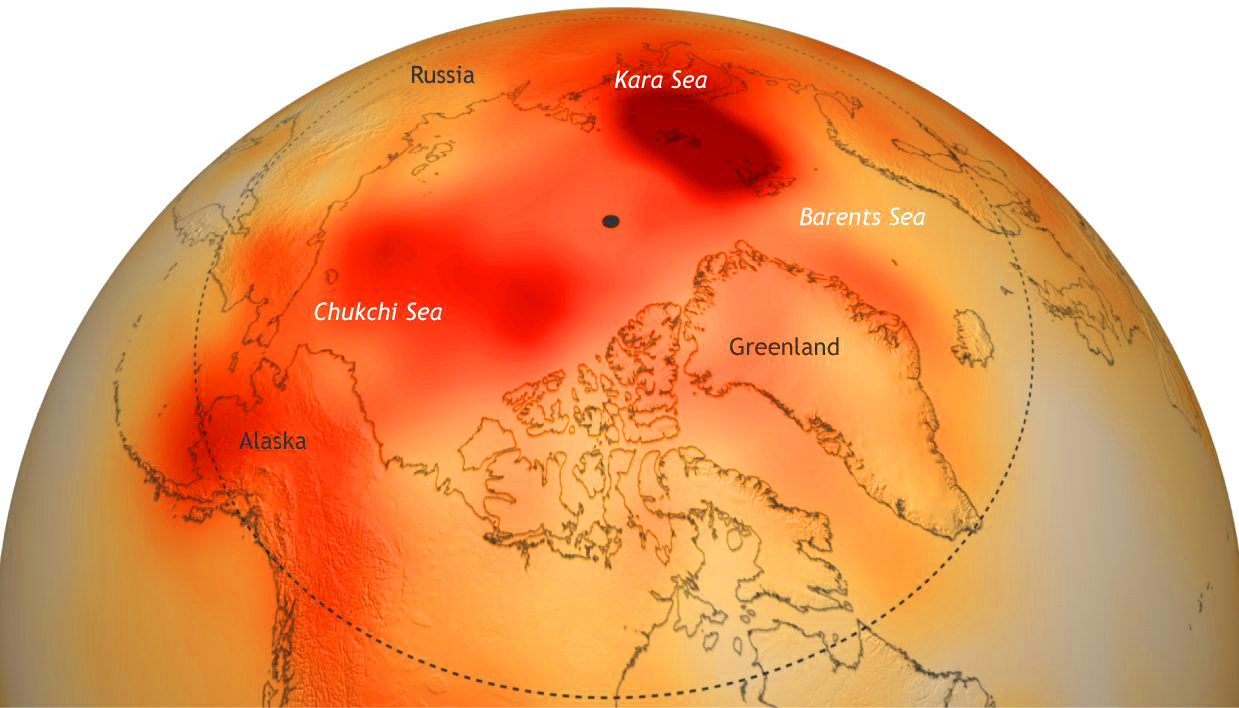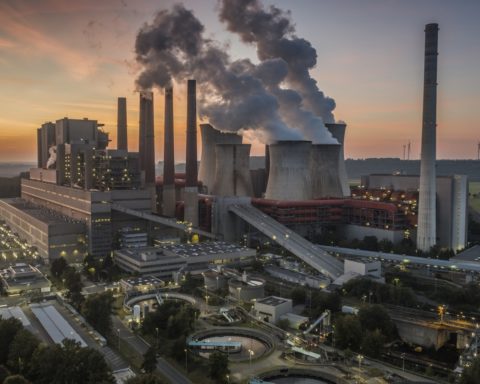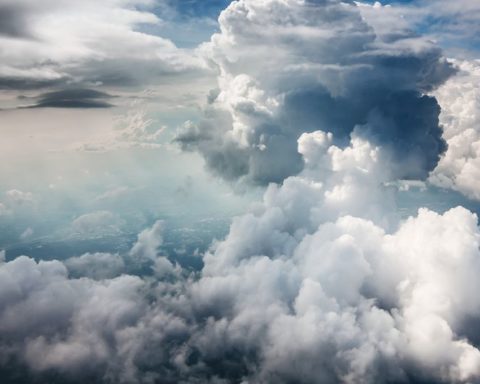Une étude publiée ce 28 juin dans la Revue Nature Climate Change alerte : au cours des trente dernières années, la température du Pôle Sud a augmenté trois fois plus vite que la moyenne mondiale. Une situation inattendue qui inquiète les scientifiques. En effet l’augmentation des températures en Antarctique pourrait accélérer la montée redoutée des océans. Après l’augmentation spectaculaire ce printemps des températures en Arctique, le réchauffement des pôles dévient décidément problématique.
L’Antarctique est marqué par une variabilité climatique extrême, avec de fortes différences entre les côtes et l’intérieur du continent, notamment le plateau glacé où se trouve le Pôle Sud géographique. Ainsi, la majeure partie de l’Antarctique occidental et de la péninsule antarctique ont subi un réchauffement et une fonte des glaces dans la deuxième moitié du XXe siècle. Dans le même temps, au contraire, le Pôle Sud s’était plutôt refroidi. Au moins jusque dans les années 1980, avant que cette tendance ne s’inverse, comme le montre l’étude parue lundi dans la revue Nature Climate Change.
Avec +0,61°C par décennie, entre 1989 et 2018, la température enregistrée sur la base Amundsen–Scott, au Pôle Sud géographique, a augmenté plus de trois fois plus que la moyenne mondiale, indiquent les chercheurs. Un résultat qui les a surpris. « On croyait que cette partie de l’Antarctique — le haut plateau isolé — serait à l’abri du réchauffement. Nous avons découvert que ce n’était plus le cas », a expliqué à l’AFP l’un des auteurs, Kyle Clem, de l’université Victoria à Wellington.
Le « mécanisme premier » ayant conduit à ce réchauffement rapide du Pôle Sud, où la température est en permanence largement sous 0°C (moyenne annuelle autour de -49°C), est lié à un réchauffement dans la zone tropicale de l’océan Pacifique occidental. Ce qui a entrainé une baisse de la pression atmosphérique dans la mer de Weddell et poussé de l’air chaud vers le Pôle Sud, selon l’étude.
Même si les modèles climatiques montrent qu’il n’est « pas impossible » que le rythme de réchauffement de 0,61°C par décennie se soit produit naturellement, c’est « très improbable », a insisté Kyle Clem, qui précise que sur +1,8°C en 30 ans au Pôle Sud, ces modèles attribuent +1°C au changement climatique provoqué par l’Homme.
« Le vrai message (…) est qu’aucun lieu n’est à l’abri du changement climatique », ont commenté Sharon Stammerjohn et Ted Scambos, de l’université du Colorado, qui s’inquiètent surtout pour les côtes de l’Antarctique et la calotte glaciaire. « Les effets du changement climatique s’y font sentir depuis longtemps », et la contribution du continent au réchauffement et à l’augmentation du niveau de la mer pourrait devenir « catastrophique », poursuivent-ils.
Des océans qui pourraient monter de 25 mètres
En effet, plusieurs études convergent pour annoncer une augmentation plus rapide que prévu du niveau des océans. Une étude menée par des chercheurs australiens et publiée en octobre 2019 dans la revue Nature avait conclu au risque d’une élévation du niveau des mers de plus de 25 mètres, à échelle de temps très rapide, dès 2030. Pour parvenir à cette sombre prévision, ils ont comparé ce qui se passe aujourd’hui avec ce qui se passait il y a environ trois millions d’années, au Pliocène.
Cette ère est particulièrement intéressante car sa configuration climatique n’est pas très éloignée de celle que nous vivons actuellement. Elle peut donc servir de modèle prédictif. Pendant cette période, la concentration de CO2 dans l’atmosphère atteignait des niveaux comparables à ceux que nous enregistrons aujourd’hui même : plus de 400 parties par million.
Il y a trois millions d’années, s’est installée une période de réchauffement intense des températures. Elles ont atteint des niveaux équivalents à une augmentation de 2°C par rapport à l’époque préindustrielle. Rappelons que nous en sommes actuellement à presque 1.5 °C. Selon les prévisions du GIEC, nous devrions atteindre, voire dépasser les 2° C prévus par l’Accord de Paris dès 2030 si nous n’abaissons pas drastiquement, et dès aujourd’hui, nos émissions de gaz à effet de serre.
L’élévation des températures a fait fondre les glaces et plus particulièrement celles de l’Antarctique qui a perdu un tiers de sa surface glacée. Ces glaces fondues se sont déversées dans les océans, les faisant monter de 25 mètres.
- LIRE DANS UP’ : Le niveau des océans pourrait s’élever de 25 mètres. Dès 2030.
Les chercheurs australiens sont arrivés à la conclusion que la plus grande partie de l’élévation du niveau de la mer pendant le Pliocène provient des calottes glaciaires de l’Antarctique. Pendant le Pliocène chaud, la géographie des continents et des océans de la Terre et la taille des nappes glaciaires polaires étaient semblables à celles d’aujourd’hui, avec seulement une petite nappe de glace sur le Groenland pendant la période la plus chaude. La fonte de la calotte glaciaire du Groenland aurait contribué à raison d’au plus cinq mètres à l’élévation maximale de 25 mètres du niveau de la mer mondiale enregistrée dans le bassin de Whanganui.
Vingt-cinq mètres, c’est beaucoup plus que ce que prévoient les experts climatiques. Selon le récent rapport spécial du Groupe d’experts intergouvernemental sur l’évolution du climat (GIEC) sur les océans et la cryosphère, les glaciers et les calottes polaires continuent de perdre de la masse à un rythme accéléré. Jusqu’à présent, la hausse devait se situer dans une fourchette allant de 0.60 à 1.1 mètres d’ici 2100. Or la nouvelle étude est formelle : nous serons dans les conditions du Pliocène dès 2030, dans dix ans !
Les chercheurs poussent donc la logique des résultats de leurs expérimentations jusqu’au bout : il est fort possible que l’Antarctique fonde et perde un tiers de sa surface, ce qui provoquerait potentiellement, selon leurs hypothèses, une élévation du niveau des mers du globe de l’ordre de 20-25 mètres.
Un tel scénario remodèlerait les rivages partout dans le monde. En effet, si un tel scénario advenait, il changerait dramatiquement notre géographie et entraînerait des désastres difficiles à concevoir.
D’autant que les effets du dérèglement climatique étant cumulatifs, cette montée des océans aggraverait l’impact des tempêtes et autres phénomènes extrêmes que les climatologues prévoient du fait de l’augmentation des températures et notamment de celles de l’océan. Une mer plus haute provoquerait en cas de vagues submersives des dégâts beaucoup plus loin dans les terres. L’impact d’un cyclone comme Katrina serait démultiplié.












